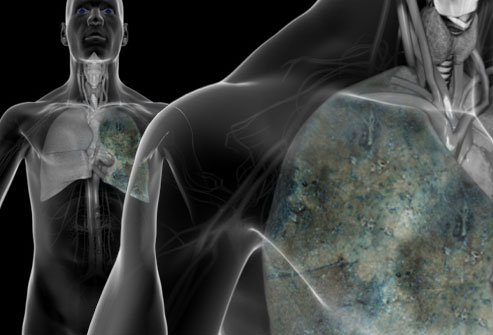ENVIRONMENTAL RADON – RADON IN BREATH
For uranium miners, inhalation over extended periods is the primary mode of intake of Ra226 into the body. Ra226 then decays to Rn222, a part of which escapes from the body without decaying. Based on experimental data, about 84% is released from the lungs, bones and soft tissues. Assuming that most of the radon escapes through the lungs, then measurement of the radon level should correlate well with the radium body burden of the miner.
The body burden of typical miners ranged from 0.22 kBq to 0.75 kBq in one study. Typical radon levels in breath were about 10 Bq/m3. Non miners showed no detectable level of radon in breath.
MEASUREMENT OF RADON GAS IN BREATH
At the present time the body burden of radium is being determined by a gamma ray whole body counting technique. This equipment is expensive, non portable and measurements are lengthy. As a consequence, the radon in breath procedure is being explored as an alternative, particularly for field work.
Breath samples are obtained by having the subject breath directly into the detector. Alternatively, the sample is first concentrated by trapping, then it is transferred to the detector. The radon gas concentration is determined by counting and analyzing the alpha, beta and gamma radiation from radon and the progeny which ingrow to an equilibrium count rate in the detector sensitive volume.
The procedure is not lengthy. The subject is required to breath radon free air (from tank) for several minutes, with the valve in the vent position, in order to purge his body of any absorbed radon, then to breath into the detector sensitive volume for a long enough time to collect a representative sample (10 minutes). The breath sample must be dried by passing the air stream through a low resistance drying column or a refrigerated trap.
The apparatus illustrated in Figure One employs the Pylon Trace Level Radon Detector (TEL). This detector functions in conjunction with a data logger such as the Pylon AB-5. The TEL is the only commercially available active radon detector with the sensitivity required for these measurements. It achieves this sensitivity by electrically focusing the radon progeny formed in the 20 litre sensitive volume of the detector onto a scintillator-photomultiplier based center electrode. Once inside the TEL the radon decays into its alpha emitting radioactive daughters, the first of which (RaA) is positively charged. The charged daughter is attracted to the negatively charged center electrode of the TEL. Since the center electrode is coated with a silver activated zinc sulphide phosphor, a strong light pulse is produced when impacted with an alpha particle from the radon daughter. The light pulse is detected by a photomultiplier tube, is counted, and the event logged by the AB-5 detector system. A series of measurements can then be dumped to a computer for analysis.
The high sensitivity of the TEL is due to its large sensitive volume (20 L) and low background noise level. In fact, the sensitivity can be readily varied by changing the volume to meet specialized measurement objectives, such as the thoron gas or the measurement of very low levels of radon.
In the apparatus, the radon daughter products within the detector sensitive volume are electrostatically focused (as with the TEL detector) onto a metal plate for a period of time (1 hour). The plate is then removed and the alpha activity which has accumulated, is counted by means of a suitable detector-scalar combination (AB-5 AEP or SA) for about one hour. Alpha particle detection by means of a silver activated zinc sulphide scintillator coupled to a photomultiplier tube is a very sensitive technique. Thus as the progeny collected on the metal plate decays, alpha particles are emitted which produce a light pulse upon impact with the scintillator, housed in the AEP or SA probes. This light pulse is detected and amplified by a photomultiplier tube, then counted by an AB-5 scalar. Various algorithms are employed to relate the count measured to the radium body burden.
Radon in breath analysis appears to be four times more sensitive than whole body counting by gamma ray methods. It is also a readily portable procedure.

